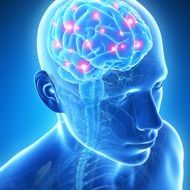For as long as man has pushed a pedal, it’s a question that has challenged psychologists, neurologists and anyone who has wondered how, sometimes, riding a bike can induce what feels close to a state of meditation.
I’ve noticed this myself. Long rides, particularly away from traffic, can help clear my mind of worries and make me focus on the simple act of riding.
In 1896 at the height of the first cycling boom, a feature in the The New York Times said this about the activity: “It has the unique virtue of yielding a rate of speed as great as that of the horse, nearly as great as that attained by steam power, and yet it imposes upon the consciousness the fact that it is entirely self-propulsion.”
The writer, credited only as “ANJ”, continues: “In the nature of the motion is another unique combination. With the great speed there are the subtle glide and sway of skating, something of the yacht’s rocking, a touch of the equestrian bounce, and a suggestion of flying. The effect of all this upon the mind is as wholesomely stimulating as is the exercise to the body.”
Several studies have shown that exercises including cycling make us smarter. Danish scientists who set out to measure the benefits of breakfast and lunch among children found diet helped but that the way pupils travelled to school was far more significant. Those who cycled or walked performed better in tests than those who had travelled by car or public transport, the scientists reported last month. Another study by the University of California in Los Angeles showed that old people who were most active had 5 per cent more grey matter than those who were least active, reducing their risk of developing Alzheimer’s.
In a German study involving 115 students at a sports academy, half the group did activities such as cycling that involved complex co-ordinated movements. The rest performed simpler exercises with the same aerobic demands. Both groups did better than they had in concentration tests, but the “complex” group did a lot better.
Cycling has even been shown to change the structure of the brain. In 2003, Dr Jay Alberts, a neuroscientist at the Cleveland Clinic Lerner Research Institute in Ohio, rode a tandem bicycle across the state with a friend who has Parkinson’s to raise awareness of the disease. To the surprise of both riders, the patient showed significant improvements.
